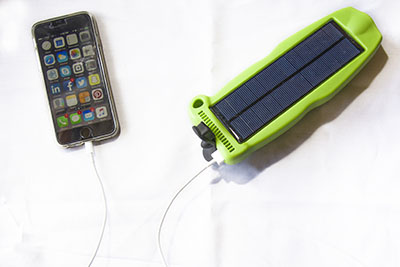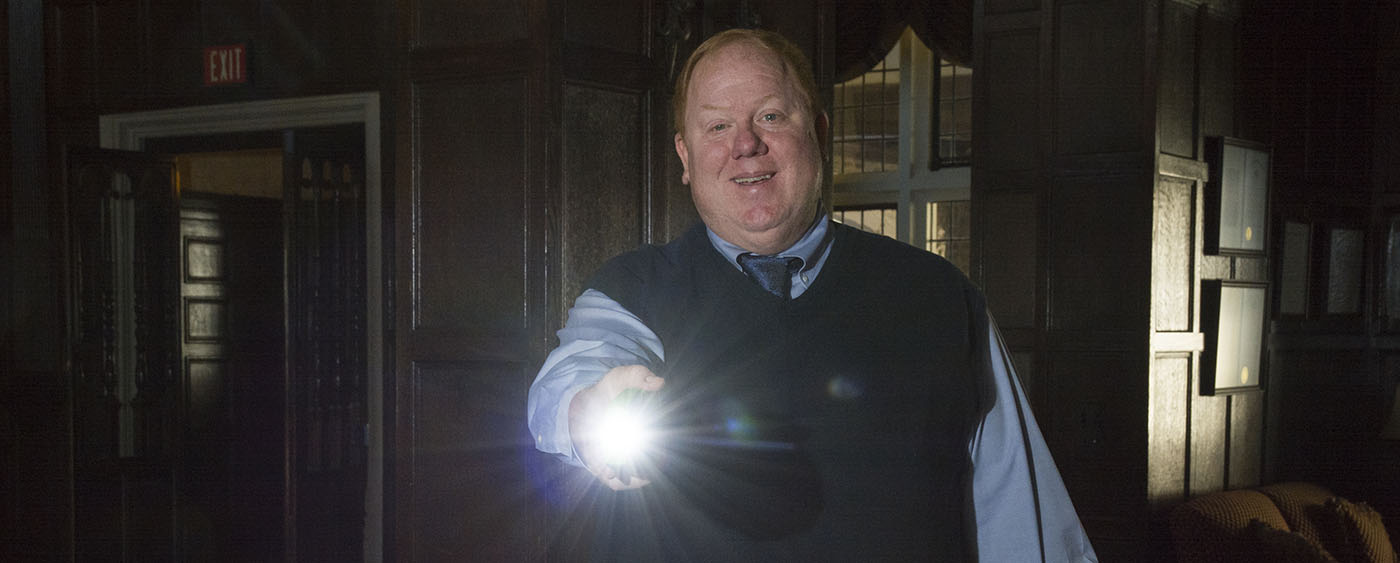A mission trip with a local nonprofit to Monrovia, Liberia, in 2009 unexpectedly started John (MS’12) and Jennifer Lafferty on the path to a new business venture.
The couple was visiting West Africa with SHALOCA (Sharing, Loving, and Caring) Ministries—for which John served as Chairman of the Board and Jennifer’s brother-in-law is pastor—to visit an elementary school that the nonprofit supported in a village outside of Monrovia.
It had been six years since the second Liberian Civil War had ended, but the effects of the war were visible and continuing to impact the country. The Laffertys especially noticed the crumbled infrastructure of electricity and landlines, caused by damage or when the rebels stole telephone wire and electrical wire sold for scrap metal. The infrastructure problem wasn’t unique to Liberia; it affected bordering countries such as Sierra Leone, which also recently experienced civil war.
Without telephone wires, West Africans relied on using disposable cell phones for calls and texts, and when those phones ran out of battery life, they often had to walk miles into the city to charge them. At these charge stations, power strips were hooked up to a generator, and anyone could leave their phone as it charged, which typically cost a dollar or two. With an average income of $7-10 per week, simply charging a phone became an expensive and sometimes sacrificed luxury.
“I saw a need and I saw that there was nothing available and that something could be simply invented,” John said.
“We fell in love with the people when we were over there,” Jennifer said. “We were involved. John conducted a workshop with people in the village and asked them, ‘What are we doing that you don’t need us to do anymore, and what aren’t we doing that you need us to do?’”
With the help of a missionary who performed in-depth research, John discovered that West Africans used either campfire and candles or a flashlight for lighting their homes at night, and that batteries in the country are not made to last longer than a couple of hours. Also, the disposal of the batteries was an environmental problem because batteries were tossed on the ground or in the water. This, combined with the need for better battery power for cell phones, led John to make a device that served as both a flashlight and a mobile charger that could be charged through solar energy.
After he began manufacturing the flashlight-charger for those in Africa, John learned that people in the villages were not only using the device, but also charging their neighbors to use it.
“Through this product, people became entrepreneurs,” John said. This development would eventually inspire the name of his company, CellMyLight, a play on the word “sell.”
The product and their experience in Africa served as a springboard for the Laffertys’ soon-to-be company. In 2011, when John was halfway through the master’s in leadership program at Cabrini, he officially created a business plan for CellMyLight as part of an assignment for his finance course.
“It was the first time that I truly considered starting a U.S. company to do this,” John said about bringing his product to the U.S. It was an especially pertinent time to reconsider the product’s potential because the African market became saturated with similar products in the years after John began to distribute his flashlight.
After earning an A in his class, Lafferty embarked on a two-year research project to determine if there was a market for his product domestically, and if he could compete in the marketplace.
While the solar-powered flashlight/charger that he sent to Africa would only charge disposable phones, he saw a market for creating a similar product in the U.S. that would support smartphones. His target market would be those who enjoy outdoor activities such as golfing, camping, boating, or hiking—activities that aren’t necessarily near power outlets.
His research proved that he could compete, leading him and Jennifer to establish their company. They invented the company’s solar flashlight to not only support the more outdoorsy population, but also to provide people with light and a power source for basic necessities in an emergency situation. It has an SOS signal, a strobe flash, and the power to charge cell phones or run small appliances.

The fully patented light took about two years to manufacture and test, and landed in the market in 2016. The product is made in America, mostly in Pennsylvania.
“The boards of my parts are made in Coatesville, the assembly comes out of Chester County, and the packaging comes from Gettysburg,” John said.
“You lose a little bit of profit, but you create jobs by using local companies,” Jennifer said.
Wanting to continue using their talents and product to benefit others, the Laffertys created a nonprofit to help carry out charitable initiatives through CellMyLight. Jennifer manages the nonprofit, Light of Marnie—named after her late mother, who believed in education and helping underprivileged children—to effectively take and distribute donations from CellMyLight to charities around the country and abroad, including a percentage donated back to Africa.
“The ability to give to organizations both here and in Africa and to support education is really at the heart of our company,” John said. “One of the main reasons why I chose Cabrini for my graduate degree is the social justice mission—it has been ingrained in me through my education and it only made sense to incorporate social justice in our company.”
